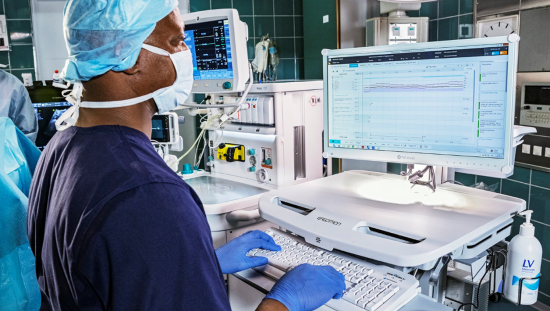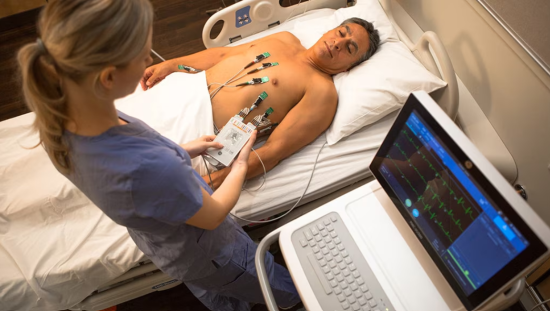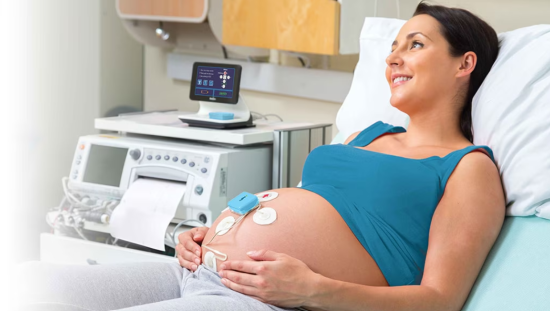Patients on mechanical ventilation often receive aerosolized medication because of its ability to achieve a high drug concentration in the lung tissue. However, how well this medication distributes into the patient’s lungs depends on various factors, such as the type of aerosol delivery chosen or its placement.
To ensure each ventilator-dependent patient receives the greatest therapeutic effect, physicians must make a patient-specific decision regarding the aerosol delivery method. That’s why in this article, we’ll delve into the types of devices and medications which can be utilized, but also take a look at the additional factors physicians must consider when making this decision.
Types of Aerosol Delivery Devices
When considering aerosol medication delivery for a patient, one of the most important decisions is the type of aerosol delivery device that will be utilized. Each type offers its own set of pros and cons, which makes some a better choice for certain patients over others.
Nebulizers
Nebulizers turn liquid medication into a mist, and the three types of nebulizer technologies include jet, vibrating mesh, and ultrasonic.
Jet Nebulizers
Jet nebulizers are the most commonly used type and utilize a compressed gas source to draw medication through a capillary tube, generating a wide range of particle sizes.
A new advancement with jet nebulizers is breath-enhancement technology, which features a design that allows for its use on the wet side of the humidifier instead of the dry side where nebulizers are typically used. Utilizing the wet side reduces potential humidifier contamination and aerosol loss. Additionally, studies have shown that breath-enhanced technology allows for better control of drug delivery.1
Vibrating Mesh Nebulizers
The vibrating mesh nebulizer works by forcing liquid medication through multiple apertures in a mesh to generate aerosol.
The vibrating mesh nebulizers often have greater labor requirements since someone must clean them after every dose. However, they do not require patient coordination and deliver high doses quicker than the jet nebulizer. Additionally, research has shown that the vibrating mesh nebulizer is associated with higher volumes of delivered drugs. 2
A 2020 review compared the effects of vibrating mesh and jet nebulizers in the pediatric population, finding that those treated with vibrating mesh needed fewer treatments and saw desired results faster.3
However, other studies have found that delivery through this method can be unpredictable.1
Ultrasonic Nebulizers
With ultrasonic nebulizers, a piezoelectric crystal vibrates at a high frequency, producing aerosol. The ultrasonic nebulizer has some limitations, such as an inability to aerosolize viscous solutions, large residual volumes, and degradation of heat-sensitive materials. Because of this, the ultrasonic nebulizer is not an ideal choice when using suspensions or proteins.4
Pressurized Metered-Dose Inhalers
The pressurized metered-dose inhaler (pMDI) is a small and portable multi-dose device that uses a propellant under pressure to deliver a certain amount of an aerosol through an atomization nozzle.
However, one limitation of pMDIs is that their design does not allow for the delivery of inhaled medications to ventilator-dependent patients.5 Spacers can help in this situation.
Spacers are an add-on device to the pMDI that creates a closed pressurized circuit, making it an option for those who are ventilator dependent and unable to use traditional pMDIs. There are three categories of spacers used in critical care cases: unidirectional adapters, bidirectional adapters, and chamber spacers.5
Medications That Can Be Aerosolized
The following types of drugs are often aerosolized for patients on mechanical ventilation:
- bronchodilators
- antibiotics
- corticosteroids
- surfactants
- prostanoids
- biologicals
- mucolytics
However, different drugs are compatible with different nebulizers. For example, bronchodilators can be used with a pressurized metered-dose inhaler, jet, and vibrating mesh nebulizers, while the antibiotic amphotericin B is only compatible with jet nebulizers.
How to Maximize Particle Distribution
When using a nebulizer for aerosol medication delivery, its location has a critical influence on particle distribution and, thus, treatment efficacy.
There are many possible places for the nebulizer, including at the ventilator, the humidifier, the Y-piece, and before the Y-piece. The best site for the nebulizer, though, depends on the type of nebulizer chosen.
The jet and vibrating mesh nebulizers perform the best at the humidifier or ventilator and worst at the Y-piece. Ultrasonic nebulizers also perform the worst at the Y-piece but best at the humidifier.6
Other Considerations for Delivering Aerosolized Medications
Nebulizer-Related Factors
In addition to the type of nebulizer chosen and its location, other factors that influence aerosol drug delivery with a nebulizer include residual volume (the amount of medication remaining in the nebulizer after treatment), gas flow, and bias flow in the circuit. These factors influence the amount of dose emitted.
In general, vibrating mesh and ultrasonic nebulizers offer smaller residual volumes, meaning the devices delivers more of the drug during treatment.
pMDI Factors
Manufacturers of pMDIs recommend priming the pMDI before its first use or if it has been 24 hours or more since its last use. Shaking the pMDI before use may also be recommended by the manufacturer, with studies showing that total and respirable doses with pMDIs can be reduced by 26% and 36% if it is not shaken before use. 5 This is because the medications in the pMDI canister can separate from their propellants, which causes a decrease in emitted and propelled doses.
Conclusion
There are many factors that influence aerosol medication delivery in mechanically ventilated patients. From the type of medication delivered to the patient, to the pros and cons of a delivery device, physicians must consider many factors when administering aerosol medications to ventilator-dependent patients.
References
- Ashraf, S., McPeck, M., Cuccia, A. D., & Smaldone, G. C. (2020). Comparison of Vibrating Mesh, Jet, and Breath-Enhanced Nebulizers During Mechanical Ventilation. Respiratory care, 65(10), 1419–1426. https://doi.org/10.4187/respcare.07639
- Edge R, Butcher R. Vibrating Mesh Nebulizers for Patients with Respiratory Conditions: Clinical Effectiveness, Cost-Effectiveness, and Guidelines [Internet]. Ottawa (ON): Canadian Agency for Drugs and Technologies in Health; 2019 Jul 12. Available from: https://www.ncbi.nlm.nih.gov/books/NBK546785/
- Moody, G., Luckett, P., Shockley, C., Huang, R., & Ari, A. (2020). Clinical Efficacy of Vibrating Mesh and Jet Nebulizers With Different Interfaces in Pediatric Subjects With Asthma. Respiratory Care, 65(10), 1451-1463. doi: 10.4187/respcare.07538
- Ari, A. (2014). Jet, Ultrasonic, and Mesh Nebulizers: An Evaluation of Nebulizers for Better Clinical Outcomes. Eurasian Journal of Pulmonology, 16, 1-7. DOI: 10.5152/ejp.2014.00087
- Ari, A. (2015). Aerosol Therapy in Pulmonary Critical Care. Respiratory Care, 60(6), 858-879. doi: 10.4187/respcare.03790
- Berlinski, A., & Willis, J. R. (2013). Albuterol delivery by 4 different nebulizers placed in 4 different positions in a pediatric ventilator in vitro model. Respiratory care, 58(7), 1124–1133. https://doi.org/10.4187/respcare.02074
© 2023 GE HealthCare GE is a trademark of General Electric Company used under trademark license. Reproduction in any form is forbidden without prior written permission from GE HealthCare. Nothing in this material should be used to diagnose or treat any disease or condition. Readers must consult a healthcare professional.
JB24499XX







